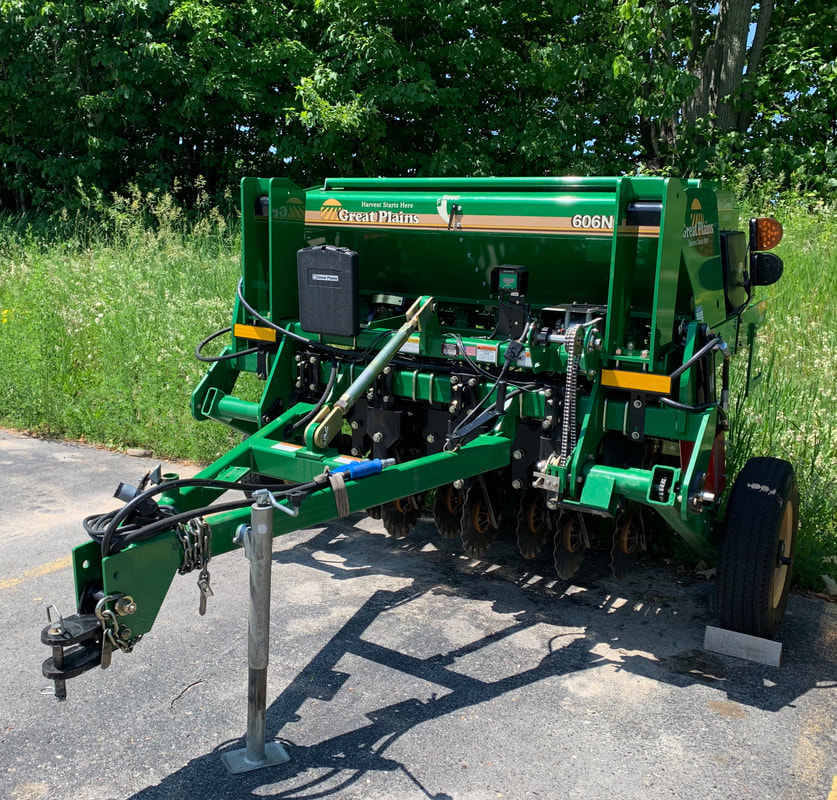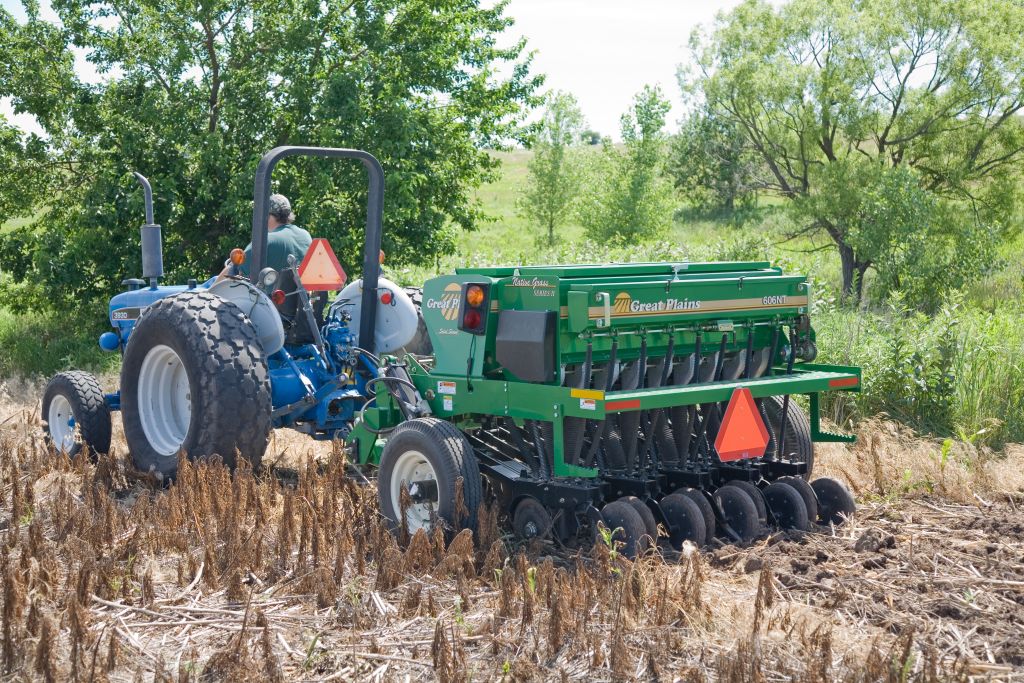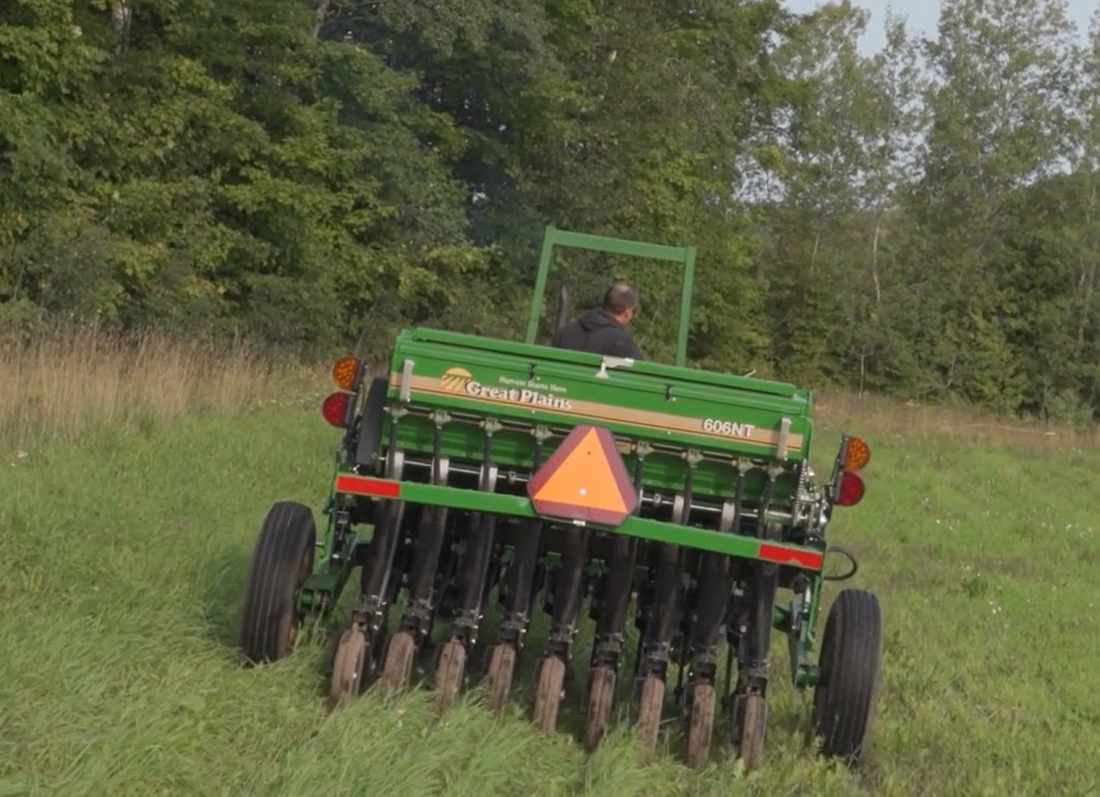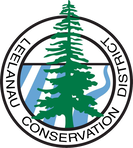NO TILL PLANTER
|
No-Till Planter Rental Fees
Leelanau County: $15.00 / acre ($100.00 minimum) Outside Leelanau County: $15.00 / acre ($175.00 minimum) To schedule the seeder for use, contact the District at 231.256.9783 |
Sustainable Farming With No-Till Planter Great Plains 606NT – No-till Drill The Leelanau Conservation District has purchased a new Great Plains 606NT No-till drill for your use. This planter offers most of the same planting options as our previous drill with 3 separate seed bins: (1) Main Box holds 12 bushels and is used mainly for grasses, grains and larger seeds. (2) Small Seed Box holds 1.4 bushels and is used for alfalfa, clover, Timothy, etc. (3) Native Grass Box holds 6 bushels and is used for brome, native grasses & wildflowers. There are 9 seeding units spaced 7.5 ” apart for an overall seeding width of 6 feet. Transport width is 8.5 feet. Features include digital acre meter, grease bank, safety lighting and seed level indicators. The end-wheel design allows for easy transport with a half ton pickup and a clevis hitch. A tractor with at least 40hp and rear hydraulics is required for planting. Sustainability Factors of No-Till Farming
Less Soil Compaction: Multiple passes over a field with heavy equipment compacts the soil more than no-till planting. Additionally, bare soil can easily become compacted by rainfall. Tillage breaks up the soil structure (soil aggregates), which makes it more susceptible to compaction. The ground that’s not tilled is less compacted – before, during, and after the planting process. Less Soil Erosion: The vegetative cover that’s left behind in no-till planting helps control the loss of topsoil because the soil isn’t being turned over. As a result, the soil is more resistant to water and wind erosion that causes the loss of topsoil. This is especially true when an abundance of mulch cover (stalks, straw, leaves, pods, chaff) is maintained on the soil surface. Water Conservation: The vegetative cover or plant residues that are left behind in no-tillage also capture water, help keep the soil moist, and minimize the evaporative effects of the wind and sun. Whether dryland (rain-fed) or irrigation, this “water-saving” effect of no-till farming has considerable importance. Improved Soil Fertility: By not disturbing the topsoil by tillage, phosphorus fertilizers remain effective for longer (many years). The more soil the P fertilizers are exposed to, the more they react chemically with the soil particles and become bound or fixed into forms that aren’t available to the plant. Also, when plant residues decompose at a natural pace on the soil surface, microbial activity increases. This creates a healthier field ecology, which contributes to fewer flare-ups of damaging insects. By avoiding tillage, soil organic matter can increase, and this is the Number One factor for productive soils Lower Costs: With no-till farming, you only have to go over the field once to establish your crop, not three to five times, which drastically reduces fuel and labor costs. There’s also less equipment needed, and less wear and tear on machinery. Improved Crop Yields: Crop yields with no-till farming should equal or exceed those of conventional tillage, particularly if you use the right equipment. |



